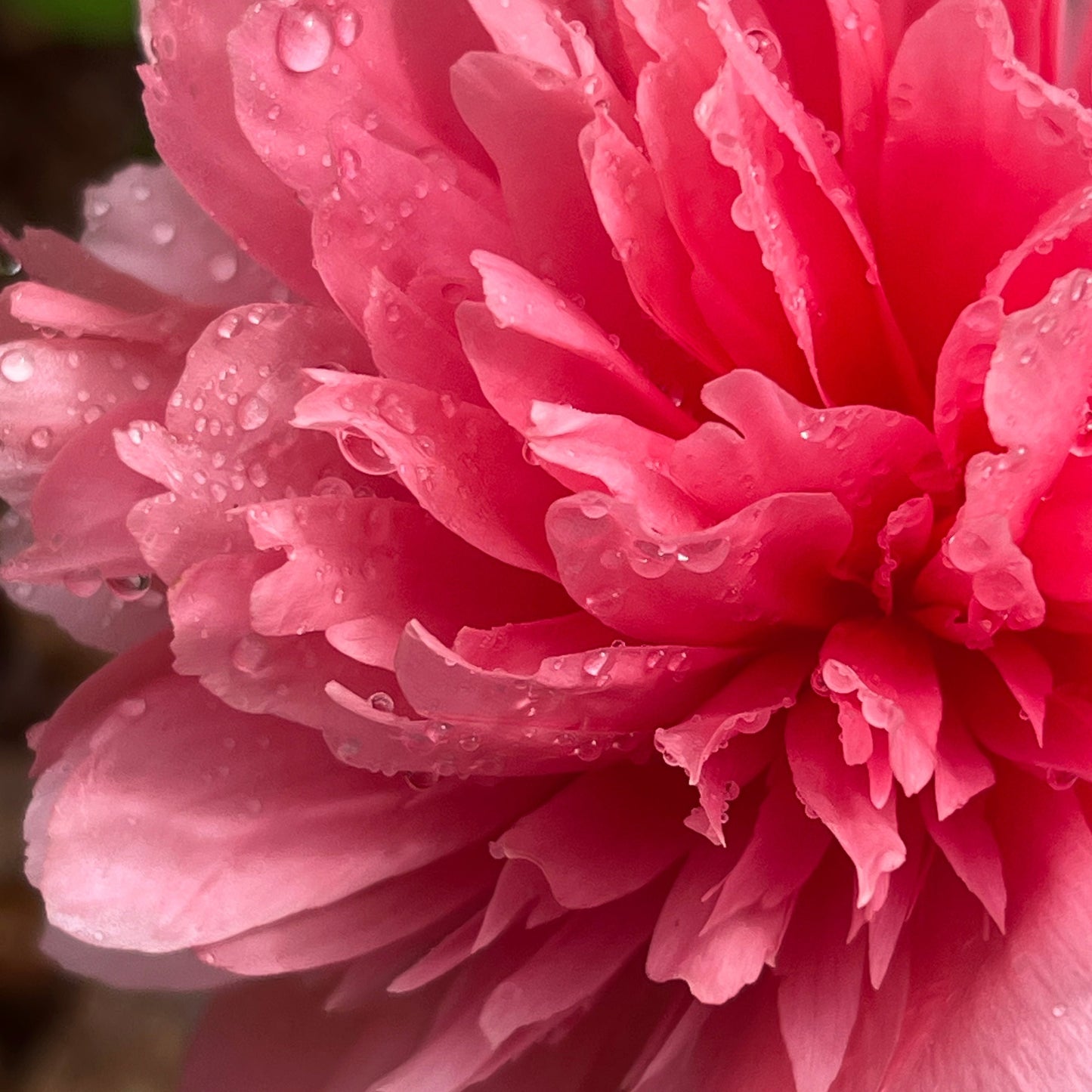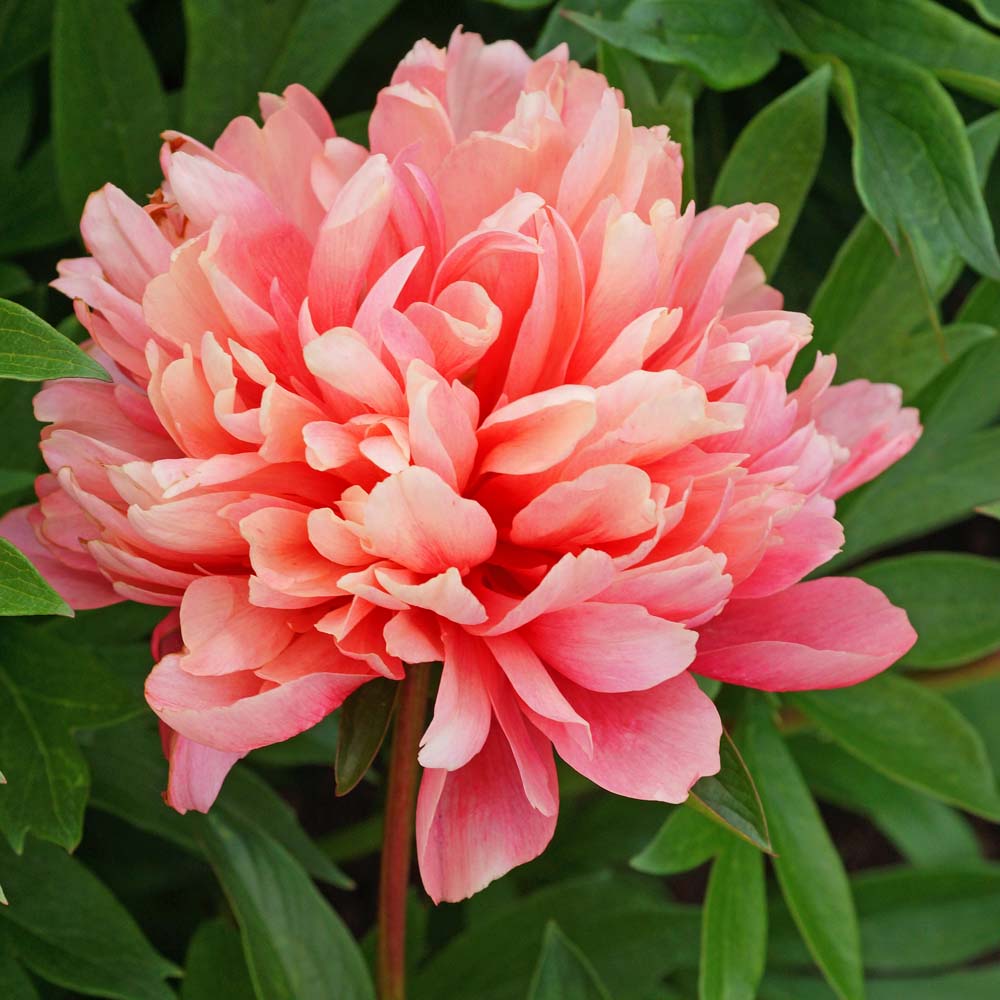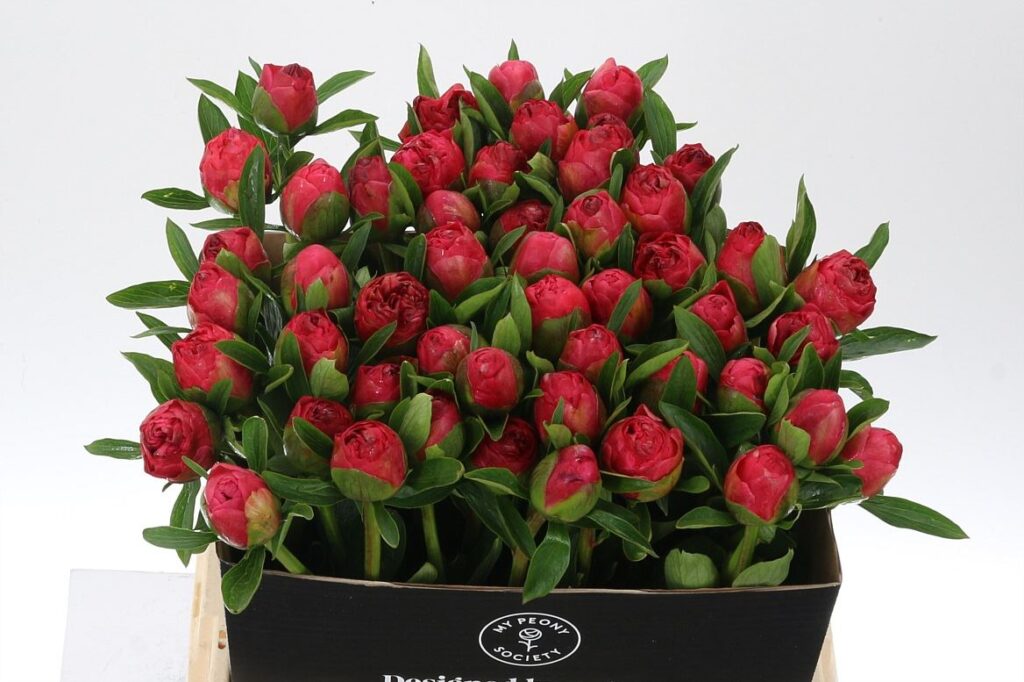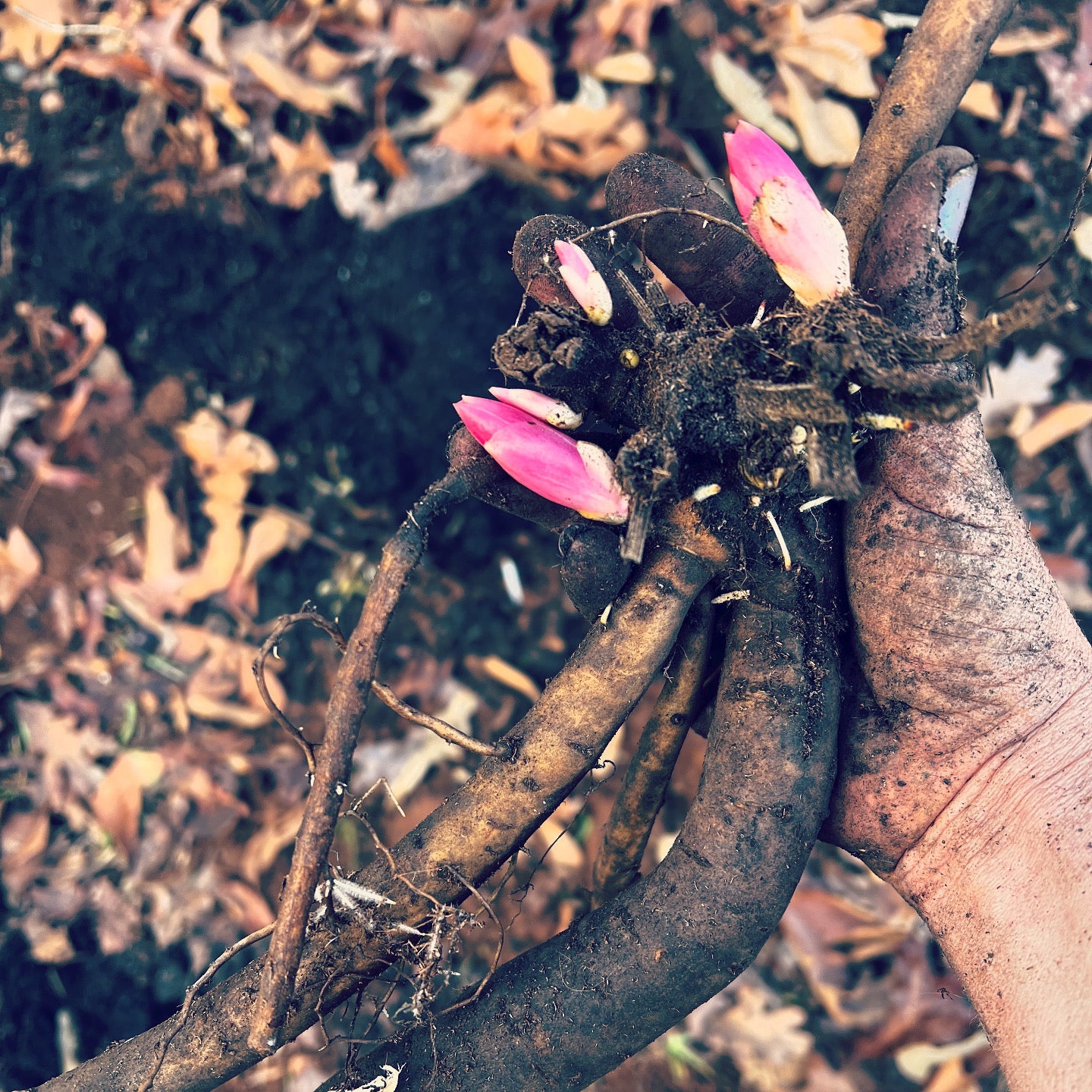Peonies are long-lived plants that can thrive for a century or more. The root system of a peony is not only large, it's also quite different from that of most other perennials. Peonies have two types of roots. Fine, fibrous ones that absorb water and nutrients, and tuberous roots that are as thick your finger and very brittle. The thick ones are actually underground stems with “eyes” that sprout new shoots.
Planting:
Since some of a peony’s roots are actually underground stems, it’s important not to plant them too deeply. There should be no more than about an inch of soil covering the upper-most roots. If they are deeper than that, you will get a robust plant, but very few flowers.
During the first growing season, the soil will gradually settle around the newly-planted roots. Sometimes this results in the roots sitting deeper than intended. If this happens, gently lift the roots so they are at the correct level. If you decide to mulch the area, keep the root zone right under the plant bare. Dig hole at least twice the width of your roots to reduce soil compaction.
Care:
Once your peony plants mature, you can cut as many stems as you like. But during the first few years, it’s best to cut just few stems and let the plants retain as much of their foliage as possible. This will give them the maximum amount of energy to bulk up their root system.
When the plants finish blooming, use scissors or sharp pruning shears to cut off the dead blossoms. Try to do this before the seed pods form. Remove the flower as well as about 6” of the stem. This will allow the rest of the foliage to hide the cut stems.












